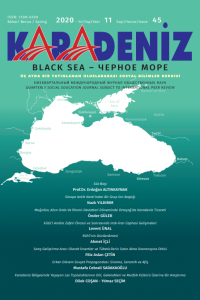KÛTÜ’L AMÂRE ZAFERİ ÖNCESİ VE SONRASINDA IRAK-İRAN CEPHESİ GELİŞMELERİ
DEVELOPMENTS ON THE IRAQI-IRANIAN FRONT BEFORE AND AFTER THE KÛTÜ’L AMÂRE VICTORY
Author(s): Levent ÜNALSubject(s): Military history, Pre-WW I & WW I (1900 -1919)
Published by: Kültür Ajans Tanıtım ve Organizasyon
Keywords: WWI; Iraqi Front; Iranian Front; Kûtü’l Amâre; Ali İhsan (Sabis) Pasha;
Summary/Abstract: In the First World War, the Iraqi and Iranian fronts are two interrelated fronts.Of these, large-scales, long term and continuous battles took place on the Iraqi front, the Iranian front gained importance in terms of threatening the Iraqi front. While Turkish forces were fighting against British troops on the Iraqi front, they clashed with Russian forces on the Iranian front. The Iranian front was opened when the course of battles in Iraq developed in favour of the Ottoman army. The opening of this front, the Russian forces from the north of Iran threatened the Iraqi front was also contributed to the progress. However the front was not opened to eliminate this threat. The main objective was to lead the rebellions against the Entente States in a wide region up to Central Asia and India by controlling all of Iran. When the aim was far-reaching, an attack force allocated for the front to destroy the Russian forces in Iran, rather than a defensive force to prevent the threat. As a result, almost half of the forces on the Iraqi front were shifted to the Iranian front, thus the Iraqi front was weakened and made open to the British offensive. In addition, despite successful battles on the Iranian front and advancing into the interior of Iran, the forces were forced to retreat rapidly without any concrete benefits. In this article, the developments on both fronts will be discussed in integrity, the conditions that compel the Ottoman State to send forces to Iran by considering the weakening of combat power on the Iraqi front will be examined and the results of this application will be evaluated. Literature review method and qualitative research model have been used for the study.
Journal: Karadeniz Uluslararası Bilimsel Dergi
- Issue Year: 2020
- Issue No: 45
- Page Range: 36-63
- Page Count: 28
- Language: Turkish

